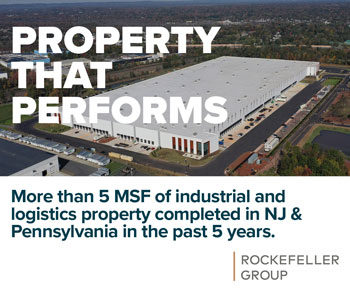By Joshua Burd
Many developers thrive on speed and certainty — and they’ve had considerably more of both in recent years thanks to a law that changed the landscape of environmental cleanups in the state.
Stakeholders are now mulling how to make a good thing even better as they prepare to mark 10 years since the law’s passage, while navigating other proposed changes by state policymakers.
The law, the Site Remediation Reform Act of 2009, created the Licensed Site Remediation Professional program and paved the way for private-sector consultants to oversee cleanups of polluted sites in New Jersey. The policy has greatly reduced the backlog previously overseen by Department of Environmental Protection case managers, while bringing greater predictability to deals or projects involving contaminated land.

“The market is very hot for these properties, especially because most of them end up being used for distribution- and logistics-related projects,” said Michael McGuinness, CEO of NAIOP New Jersey, the commercial real estate developers association. “And land is in short supply, so it’s becoming more common for the private sector to take on the costs to clean them up, and we don’t want to make it any less attractive.
“We’ve got the location, it’s working and we’re getting a lot cleaned up. Why would we slow that down?”
It’s a common refrain among industry advocates and the network of consultants who are licensed under the program, many of which have taken part in recent stakeholder discussions led by the DEP about potential updates to the law. To that end, supporters hope to see tweaks that will further refine the program and expedite remediation projects.
For instance, policymakers are considering how to streamline the paperwork and other requirements necessary to receive a response action outcome, or RAO, which serves as an LSRP’s declaration that a cleanup is complete. The New Jersey Licensed Site Remediation Professionals Association has noted that it can take more than a year for the DEP to review and approve the permit that gives way to an RAO, an issue that could be cleaned up in new legislation or administrative changes.
The development sector and LSRPs are also watchful of policy changes that could slow the momentum created by the site remediation program in recent years. Stakeholders say the DEP has floated a notable change to its discharge reporting requirements: Namely, if a prospective buyer and its consultants discover contamination on a site during due diligence, they must report it to the seller, which must then report it to the state.
Would-be buyers are under no such obligation currently, so the proposal “is significant in that it changes the way due diligence proceeds,” said Dennis Toft, an attorney with Chiesa Shahinian & Giantomasi P.C. in West Orange. While it would trigger new environmental cleanups and additional work for LSRPs, some stakeholders fear that “some potential sellers won’t even put their property out to market in order avoid this potential liability.”

“It significantly changes the dynamic between sellers and buyers,” said Toft, who chairs the firm’s environmental group. “There’s a concern that people would be less willing to put their properties on the market and it may just create a chilling effect on real estate transactions if this gets incorporated into a revision to the statute.”
It’s among several topics to come up during the recent stakeholder discussions, ahead of what could be a formal update in 2019. Toft said he believes the DEP and lawmakers will look to tackle “some easy cleanup consensus points” through smaller fixes to the program, followed by “a more extensive and intense stakeholder process” in the first quarter.
State Sen. Bob Smith, who chairs the Senate’s Environment and Energy Committee, is said to be spearheading the effort in the Legislature. He could not immediately not be reached for comment.
While the program launched in 2009 with the passage of SRRA, it wasn’t until 2012 that so-called responsible parties were required to use LSRPs for their sites. The program accelerated in earnest another two years later in May 2014, the DEP’s initial deadline for completing remedial investigations at all sites that were under the care of an LSRP.
Environmental professionals gradually adjusted to the program during those five years as hundreds became licensed, while becoming comfortable with the idea of putting their name and practices behind the program. In the meantime, developers came to understand the program and DEP staffers began to grow more comfortable with their new role.
“I think the industry and the regulators have fallen into a nice place with the program,” said Michael Sylvester, executive vice president with EWMA, a Parsippany-based environmental consulting firm. “The market overall has gotten used to the role of the LSRP and how it fits into the projects with some confidence.”
The results are tough to ignore.

Rodger Ferguson, president of the New Jersey Licensed Site Remediation Professionals Association, noted in a recent column for Real Estate NJ that the number of remediations completed in the state now averages around 2,000 a year. That is about four times the rate of completions when the program was implemented in 2009.
New Jersey also marked a milestone this summer when it recorded 12,000 environmental cleanups completed under the law, Ferguson said. And the program has made a measurable difference in the pace of remediation: The state saw just over 2,900 cases closed from 2001 to 2008, Ferguson said, a total that more than doubled to 6,223 from 2009 to 2016.
To many of the state’s developers and nearly 700 LSRPs, the program needs only minor changes to build on its success. Ferguson said that some of the delays in approving response action outcomes are caused by improperly completed paperwork, so the group is now continuing its push with the DEP for improved training and education for consultants and responsible parties.
But the LSRPA has also proposed what it deems to be a more creative solution to “ensure no bottlenecks exist between when the work of remediation is completed and the permit is issued so an RAO can be filed.”
“One potential solution would allow the LSRP to issue some permits by rule while retaining NJDEP’s ability to review the final remediation documents to ensure the necessary controls are in place for the environment and public health,” Ferguson, the president of PennJersey Environmental Consulting in Milford, wrote in his recent column.
“The success of SRRA is evident, but any program, with enough experience, can be updated and improved. With appropriate and reasonable changes to our state’s laws and regulations, we can accomplish even more for the public, the environment and business.”
Stakeholders are hopeful for other changes. For instance, EWMA President Don Richardson noted that responsible parties must now post a form of financial assurance to cover the cost of an impending remediation. But he said the DEP has floated a legislative fix that would add surety bonds to the list of options available to do so, in what would likely be a welcome change.
“Insurance and bonding could be another means to attain the goal of a remediation funding source,” Richardson said. “That’s one example where the state did hear what everybody was saying — that you’re punishing us by tying up capital or affecting our books with regard to posting this money for doing cleanups.”

Elsewhere, the potential changes to discharge reporting requirements account for one of the biggest unknowns. Toft said he understands the intent of the proposal — to potentially bring more sites into the state’s remediation program — but believes it could have the opposite effect.
“There are all kinds of reasons why people want to sell property,” Toft said, “but it just creates another potential issue and it may not really add that many properties to those that are being remediated.”
Changing the game
For all of the prospective policy changes impacting the LSRP program, stakeholders have raised concerns about an amendment that has already taken place.

This past summer, the state Department of Environmental Protection announced that LSRPs would need additional state approvals when it comes to the use of alternative fill, or partially contaminated soil that is safe to use at a development site. Prior to the change, consultants and their clients had clearance to authorize the use of alternative fill, provided the soils meet certain requirements and the LSRP files the proper paperwork.
But they must now seek DEP approval if they are using alternative fill to raise the site above its previous elevation, in what experts say is a well-intentioned effort to prevent abuse when it comes to using contaminated soils. Developers may still bypass the agency if they are merely backfilling whatever soil had been excavated, but the new requirements could be enough to cause delays.
“The concern is that remediations and development projects are going to get slowed down because of the required submissions to DEP,” said Robert Crespi, a member of CSG’s environmental and renewable energy and sustainability groups. “And, essentially, you now have a case manager reviewing the fill material that you’re bringing in, so it’s a real issue, it’s a real concern.”










